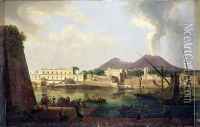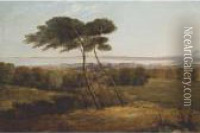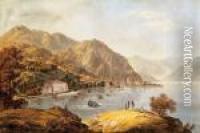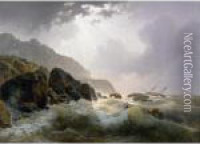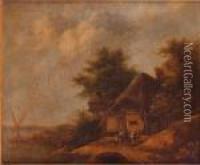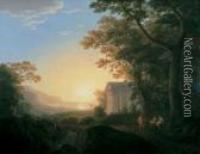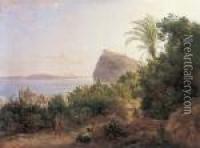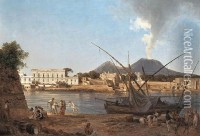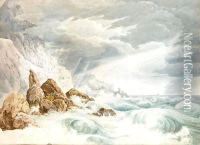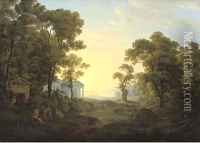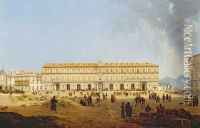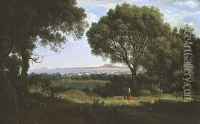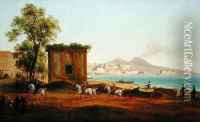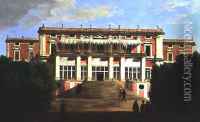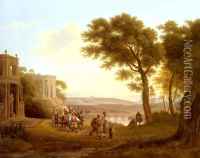Josef Rebell Paintings
Josef Rebell was an Austrian landscape painter known for his expressive and atmospheric depictions of Italian scenery. Born on December 11, 1787, in Vienna, Rebell demonstrated a strong affinity for art at an early age. His initial training began under landscape painter Laurenz Janscha in Vienna, and he later continued his studies at the Vienna Academy of Fine Arts, where he developed a foundation in classical landscape painting.
In 1810, Rebell moved to Rome, which was a central hub for artists at the time. The city's rich historical and cultural landscape had a profound impact on Rebell's artistic development. He immersed himself in the study of Italian masters and was particularly influenced by the work of Claude Lorrain, whose classical landscapes were characterized by their idealized beauty and poetic approach to nature.
Rebell quickly became a part of the thriving art community in Rome and began to establish his reputation as a landscape painter. His work was characterized by its romantic sensibility and often depicted the Italian countryside, coastlines, and rural scenes with a dramatic play of light and shadow. Rebell's paintings were notable for their detailed foregrounds and expansive, atmospheric backgrounds, which conveyed a sense of grandeur and emotional depth.
Throughout his career, Rebell received numerous commissions from patrons across Europe, which allowed him to travel extensively throughout Italy. His journeys provided ample inspiration for his work, and he became known for his ability to capture the unique qualities of the various Italian regions in his paintings.
Josef Rebell's health began to deteriorate in the late 1820s, and he returned to Vienna in an attempt to recover. Unfortunately, he passed away at the relatively young age of 40 on November 18, 1828. Despite his premature death, Rebell left a significant legacy as one of the leading landscape painters of his time. His work had a lasting influence on the development of landscape painting in the 19th century, particularly in the German-speaking regions, and continues to be celebrated for its contribution to the Romantic movement in art.
